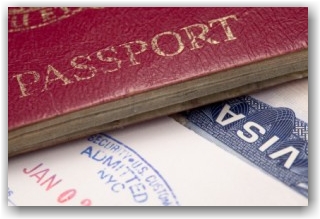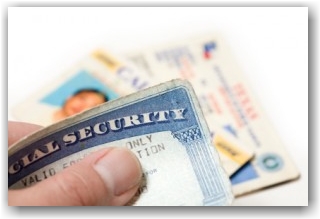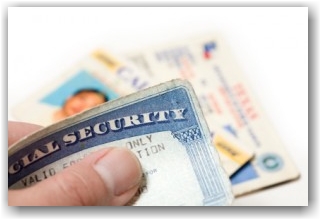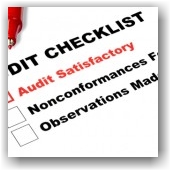Archive for the ‘Staffing Agencies’ Category
Thursday, January 29th, 2015

It’s almost that time of year again for H-1B filing season FY 2016 (commencing April 1, 2015), and it’s not too early for employers to be discussing hiring needs with their management team and assessing where in the organization they wish to sponsor H-1B professionals, and identifying potential candidates that they may want to sponsor for H-1B status. This could include, for example, recent graduates employed pursuant to F-1 Optional Practical Training, foreign nationals in TN status that the company may wish to sponsor for permanent residence, and candidates in L-1 status working for other employers or in some other non-immigrant classification who would need to change their status to H-1B in order to extend their stay and accept new employment.
The H-1B job offer and the job description must be for a specialty occupation that requires a minimum of a bachelor’s degree or its foreign equivalent.
What is the definition of a specialty occupation? A specialty occupation requires the theoretical and practical application of a body of specialized knowledge along with at least a bachelor’s degree or its US equivalent. For example, architecture, engineering, IT, mathematics, physical sciences, social sciences, medicine and health, education, business specialties, accounting, law, and the arts are considered specialty occupations.
Small to medium-size companies are frequently asked to justify why the position requires someone with a bachelor’s degree and to explain, through various types of evidence including organizational charts, examples of work being produced, the education of previous employees in the position, etc., why their business is more unique than other similar businesses in their industry that they would require a candidate with a bachelor’s degree in a particular position.
Bachelor’s Degree equivalency can be attained through a single-source foreign degree that meets US standards, a combination of a degree and work experience, or a work experience alone equivalency that meets the “3 for 1” rule; namely, that 3 years of work experience is equivalent to 1 year of university level education (this requires an expert credential evaluation by a service or university that is authorized to evaluate work experience for degree equivalency).
Note: Bear in mind that if you have a skilled immigration professional that has a strategy in place for their green-card sponsorship (permanent residency), it is essential that the degree and its equivalency be carefully reviewed so that it will be compatible with the classification under which they will file their labor certification, the first step in the green-card process.
USCIS now requires very detailed job descriptions for H-1B visa petitions that contain the position summary, duties and responsibilities, as well as the percentage allocation spent on each job duty. It is hard to imagine that a job description with a 15-bullet point list of duties and a full page in length is insufficient, but when you work with a skilled immigration practitioner, this can be successfully argued against the O*NET occupational classification system and the Occupational Outlook Handbook, which is the primary source of job information for USCIS and the Department of Labor.
In summary: Employers need to be prepared with complete job descriptions for their H-1B prospective employees and document the need for a degreed professional thoroughly in their casework.
Discuss your H-1B requirements as well as any other business immigration matters by contacting us at info@immigrationcompliancegroup.com, or call 562 612.3996.
Tags: DOL, EAD, F-1 Students, H-1B Degree Requirements, H-1B Filing Season, H-1B Filing Tips, H-1B Job Descritions, H-1B Visa, OPT, Specialty Occupations, USCIS
Posted in Department Of Labor (DOL), H-1B Visas, Immigration News, Staffing Agencies, USCIS | Comments Off on H-1B Visas – The Job Description and Degree Requirement
Sunday, January 5th, 2014
 DHS/ICE continues to issue Notices of Intent to Fine (NOFs) at an unprecedented rate for Form I-9 related infractions. Mistakes occur in the I-9 process, it’s inevitable. While establishing a written compliance policy, training and careful prevention is the best approach. All employers should take time at the beginning of each year to conduct an internal audit and self-examination of their systems, operating procedures, and past and present practices for handling I-9s, as well as to access training needs for the employees charged with handling and supervising the I-9 process. We also recommend that you review your E-Verify submissions, as well as revisiting just how compliant your I-9 software really is with your vendor if you are using an electronic system.
DHS/ICE continues to issue Notices of Intent to Fine (NOFs) at an unprecedented rate for Form I-9 related infractions. Mistakes occur in the I-9 process, it’s inevitable. While establishing a written compliance policy, training and careful prevention is the best approach. All employers should take time at the beginning of each year to conduct an internal audit and self-examination of their systems, operating procedures, and past and present practices for handling I-9s, as well as to access training needs for the employees charged with handling and supervising the I-9 process. We also recommend that you review your E-Verify submissions, as well as revisiting just how compliant your I-9 software really is with your vendor if you are using an electronic system.
While there are many checklists and do-it-yourself guides and webinars available on the Internet and elsewhere, consulting a licensed attorney or specialist in the field who is familiar with I-9 and E-Verify compliance issues can save employers hours of research, provide a solution tailored to your organization, and save you thousands of dollars in fines and penalties should ICE knock on your door.
When ICE notifies an employer of their intention to perform an audit, it opens the door for an onslaught of inquiries and investigation from other government agencies that range from SSA mis-match issues to Department of Labor (DOL) wage and hour, USCIS, IRS, and more if you have areas of incompliance in your operating procedures. This is not the time during an audit when under pressure to clean up compliance problems.
New employers are often more at risk because many are not even aware of the I-9 requirement, and probably are also unaware of the need for all employees to complete the I-9 Form. Some are aware, but they lack knowledge concerning the regulations that govern the form; such as, timeframes, acceptable documents, form retention, and other important details that are integral to the process. Particularly, there are problems with industries such as IT consulting, healthcare, staffing agencies, and other organizations with multiple locations in regard to completing the I-9-Form remotely with the employer’s designated agent and employee in different locations.
These are just a few reasons why we urge you to assess the strengths and weaknesses of your present compliance program, and start the New Year fresh with a renewed commitment to implement best practices that will provide the foundation upon which you can develop and maintain a more compliant business and workforce.
You might be interested in joining our LinkedIn group, I-9/E-Verify: Smart Solutions for Employers,” and signing up to receive via RSS feed or email our Blog posts.
Tags: +, Department Of Homeland Security (DHS), DOL, E-Verify, I-9 AUDIT, I-9 Best Practices, I-9 Comipliance, I-9 Form, I-9 Training, I-9/E-Verify News, ICE, Immigration News, Legal Workforce, OSC, SSA
Posted in Department Of Homeland Security (DHS), Department Of Labor (DOL), Employer Compliance, Healthcare, I-9/E-Verify News, ICE, Immigration News, OSC, Social Security, Staffing Agencies, USCIS | Comments Off on Compliance Audits are Recommended for Employers at the Beginning of the New Year
Thursday, March 14th, 2013

A new edition of the I-9 employment eligibility verification form was introduced last week. USCIS has been working on the revised I-9 form for more than a year. The revised M-274 Handbook for Employers can be accessed at the same link. Many areas on the I-9 Central website have also been updated. Note the webinar schedule for the new form.
The new edition of the I-9 Form, dated March 8, 2013, will take effect immediately on publication and will become the only acceptable version of the form. Employers who need to make necessary updates to their business processes to allow for use of the new Form I-9 may continue to use other previously accepted revisions (Rev.02/02/09)N and (Rev. 08/07/09)Y until May 6, 2013. Effective May 7, 2013, all employers must use the revised Form I-9 for each new employee hired in the United States. Employers who are not using the I-9 form following the 60-day grace period will be subject to fines and penalties under 274(a) of The Act (The Immigration and Nationality Act), IRCA, as well as ICE.
The revised Form I-9 has several new features, including new fields and a new format to reduce errors, and more clearly describes the information employees and employers must provide in each section. The instructions to the form are now 7 pages in length, and we recommend that you provide the instructions and the list of documents to your new employees to refer to during the process. The form looks much more official and now displays the DHS seal at the top left of the form with space built in to eventually implement future barcode technology. Helpful new images have been added to the M-274 Handbook to illustrate how employees and employers can complete Sections 1-3 of the new form. Please also see page 23 for updated guidance on recording changes of name and other identity guidance.
In the USCIS Stakeholder conference held on March 11, 2013, many of the questions centered around the following topics that we thought might be helpful to share with you, as follows:
- Do I need to fill out a new I-9 forms for all employees? You do not need to do new I-9 forms for those employees who already have one.
- When to accept receipts: Receipts for initial employment or renewal (during reverification) of employment are not acceptable. There are 3 different documents that qualify as receipts are: (a) Receipts may be presented for sections 2 and 3 if the document was lost, stolen or damaged; the receipt is valid for 90 days. (b) Temporary I-551 (a printable notation on a machine-readable immigrant visa inside a foreign passport). This is a 1-year permanent residency stamp for a foreign national that has received permanent status abroad. The Form I-551 (permanent residency card) must be presented prior to or no later than the expiration stamp inside the passport. (c) An I-94 entry card with an unexpired refugee stamp. This is considered a receipt for an Employment Authorization Document (EAD card), or a combination of an unrestricted Social Security Card and a List B document and is valid for 90 days.
- Rehires and Reverifications: If you are rehiring an employee who completed an I-9 form within 3 years, you can continue to use the existing I-9 form, and record any name changes, the rehire date and other required information in Section 3 and change the date of hire in Section 2 (initial/date). If their work authorization as changed you can make the correction on the existing form if still valid or generate a new form I-9 and fill in Section 3 and attach to the old form. As a reminder, do not reverify US citizens, permanent residents, conditional residents, asylees with unrestricted work authorization and List B identity documents such as driver’s licenses and state ID cards.
- The use of notaries: Notaries are “designated agents” of the employer. They should not imprint their notary stamp on any I-9 documentation or attach same to the I-9 form. The employer is responsible for their actions and any violations relating to Form I-9. Photocopies of I-9 forms are also not acceptable from Notaries. A notary or any other designated agent appointed by the employer must examine the original documents presented to them and thoroughly complete and sign section 2 of the form and return the original to the employer, along with photocopies of the presented documents should this be a company policy.
- Recording social security numbers: On the List of Acceptable Documents for List C, Social Security card restrictions are explained to better assist in examination of the document. Note that individuals with temporary work authorization are issued restricted social security cards that indicate: “Not valid without USCIS/DHS work authorization
- Recording the date of hire in Section 2: When an offer of employment is extended and accepted but the employee has not yet started, the I-9 may be completed using that date instead of the ‘actual’ start date of employment. You may then go back into the form and adjust the date to the actual start date (the 1st day of work for pay). Recruiters or recruiters for a fee are not required to enter the employee’s first day of employment. However, you may enter the first day the employee was placed in a job pool after an offer of employment and acceptance.
- Must employee present documents that correspond to box checked in Section 1? No, employers may not insist on viewing any particular documents. However, if information is recorded in section 1 that puts the employer “on notice” that work authorization may be expiring, you are required to track that date and follow-up with the employee concerning their continued work authorization.
USCIS has indicated that a good place to begin implementing the use of the new I-9 form is to take time to first thoroughly read and digest the revised M-274 Handbook for Employers. Download it from the USCIS website and provide a complete copy to each and every employee charged with processing and managing the I-9 function at your place of employment to ensure that they are aware of the changes and are equipped to properly implement them. Update your company policies to reflect the changes in the form.
For those of you who manage your I-9 forms via an electronic software vendor, this is absolutely the right time to have a conversation with them concerning their compliance with the new form and make sure that it complies with all pertinent rules and regulations for I-9 electronic software . This is also an excellent time to think about additional training for your staff. Refer here for our services and solutions.
To order copies of the new I-9 form from USCIS, you can call 1-800-870-3676.
Tags: Changes to new I-9 Form, Department Of Homeland Security (DHS), Department Of Labor (DOL), Employer Sanctions, Employment Eligibility Verification, Handbook for Employers, I-9 AUDIT, I-9 Form Penalties, I-9 Training, I-9/E-Verify News, ICE, Immigration News, Legal Workforce, M-274, New I-9 Form, Social Security, USCIS
Posted in Department Of Homeland Security (DHS), Department Of Labor (DOL), Employer Compliance, I-9/E-Verify News, ICE, Immigration Legislation, Immigration News, Social Security, Staffing Agencies, USCIS | Comments Off on New I-9 Form Update from Immigration Compliance Group
Tuesday, January 15th, 2013

There have been reports for some months now that the USCIS California Service Center has enforced new interpretation concerning the way it views H-1B requirements for job location changes, when duties and all other employment terms remain the same.
Previously, according to a 2003 legacy INS memo, a simple change in job location did not require that a new petition be filed with USCIS. The employer was required to analyze prevailing wage for the new location, file and obtain a new certified Labor Condition Application (LCA) with the Department of Labor prior to the employee moving to the new location, post the LCA at the new work site according to DOL regulations, make sure wage and hour obligations were met, but did not have to file an amended petition with USCIS.
Under the CSC’s new and controversial interpretation, changes in job location alone do require amended petitions. In fact, employers are reporting site audits and revocation of H-1B petitions when USCIS inspectors could not find the H-1B worker at the work site listed in the petition. At this point, no other USCIS service center has followed this radical reinterpretation of the law – just the CSC.
Long-standing guidance still indicates that no amended petition should be required when only job location changes. However, to avoid adverse consequences – at least, until the CSC revisits its controversial new interpretation – employers should proceed with caution and work with a competent immigration professional whenever an H-1B worker’s job location changes, in order to determine whether any amended filings are required. Employers need to be careful to reveal all possible jobsite locations for each H-1B worker at the front end of case processing.
USCIS headquarters has the H-1B amendment issue under consideration and has indicated that they may issue additional guidance regarding this matter. In the meantime, please be advised that for cases under the jurisdiction of the CA Service Center for H-1B workers whose jobsite locations have changed, an amended petition prior to any geographic relocation is now required.
Should you wish to become a client of our office, please contact one of our immigration professionals at info@immigrationcompliancegroup.com, or call 562 612.3996.
Tags: California Service Center, CSC, DOL, Employer Site Visits, Employment Visas, H-1B Amended Petition, H-1B Consultants, H-1B Jobsite Relocation, H-1B Posting Notice, H-1B Staffing Agencies, H-1B Visa, Immigraiton News, Labor Condition Application, LCA, Nonimmigrant Visas, Specialty Occupations, Specialty Workers, USCIS
Posted in Department Of Labor (DOL), Employer Site Visits, H-1B Visas, Immigration Legislation, Immigration News, Staffing Agencies, USCIS | Comments Off on H-1B Visa: California Service Center Enforces Radical Interpretation of H-1B Requirements for Job Location Changes
Monday, September 3rd, 2012
By: Timothy Sutton, Communications Editor
 Today, recruiters, human resource managers, and small business owners utilize the Internet to recruit new employees. Online recruiting is cheap, efficient, and reaches a much broader audience than traditional forms of media. While there are numerous advantages to employing a professional staffing agency to locate prospective employees through the Internet, many employers choose to self-publish want ads through popular websites like monster.com or craiglist.org. Self-publishing online job posting gives the employer complete control over when, where, and how long a post will be visible to the public. Ultimately, do-it-yourself recruiting can be personally tailored to suit a particular employer’s needs.
Today, recruiters, human resource managers, and small business owners utilize the Internet to recruit new employees. Online recruiting is cheap, efficient, and reaches a much broader audience than traditional forms of media. While there are numerous advantages to employing a professional staffing agency to locate prospective employees through the Internet, many employers choose to self-publish want ads through popular websites like monster.com or craiglist.org. Self-publishing online job posting gives the employer complete control over when, where, and how long a post will be visible to the public. Ultimately, do-it-yourself recruiting can be personally tailored to suit a particular employer’s needs.
But recruiters beware. The Internet is much more sophisticated than a virtual corkboard. Keywords and phrases in your job listings can be tracked and monitored by government software, then stored in databases. Recently, the Civil Rights Division of the Office of Special Counsel (OSC) released a Best Practices notice for online job posting. Whether this notice foreshadows future litigation over civil rights violations in hiring practices is yet to be determined; regardless, the message is clear, employers need to exercise caution when recruiting online because the OSC is monitoring online want ads.
Immigration laws prohibit the use of discriminatory language regarding U.S. Citizenship, lawful permanent residence, citizenship status, or national origin unless required by law, regulation or executive order. Curiously, the OSC notice was released shortly after a handful of states attempted to curtail the rights of Deferred Action Childhood Arrival qualifiers to obtain state identification (see our previous post here). There is no data revealing any increase in discriminatory language found in online job postings, but a simple keyword search on either monster.com or craigslist.org reveals numerous non-compliant ads. For instance, if the word “citizen” is entered into Craigslist, ads for dishwashers, personal assistants, security guards, and caregivers pop up. Each ad contains some version of the following discriminatory language that the OSC notice clearly forbids pursuant to the Immigration and Nationality Act at § 1324b that prohibits discrimination based on the citizenship status or national origin in the hiring, firing unfair document practices (“document abuse”) during employment eligibility verification process, and retaliation:
- “Only U.S. Citizens”
- “Citizenship requirement”*
- “Only U.S. Citizens or Green Card Holders”
- “H-1Bs Only”
- “Must have a U.S. Passport”
- “Must have a green card”
One explanation presented by the OSC for the common use of such language is the misinterpretation of federal employment laws. Employers are not limited to the recruitment of U.S. citizens. In fact, we recently published an article on the proper method of verifying the legal employment status of refugee/asylees. Due to the complexity of adhering to the legal requirements of recruiting, hiring, and employing individuals in today’s diverse workplace, employers should seek the professional guidance of an attorney. The cost savings and convenience of self-publishing job postings are heavily outweighed by the potential financial penalties and negative publicity of losing an anti-discrimination lawsuit.
Our office has the experience and successful track record necessary to protect the interests of your enterprise. For more information, contact one of our immigration professionals at info@immigrationcompliancegroup.com or call 562 612.3996.
Tags: Anti-Discrimination, Anti-Discrimination Lawsuits, Civil Rights Violations, Discriminatory Language, Employer Comopliance Training, HR Professionals, I-9 Form, I-9/E-Verify News, Immigraiton News, Immigration Compliance Group, Internet Recruitment, Legal Workforce, OSC, OSC Best Practices for Job Posting, Recruiters, Recruitment Discrimination, Staffing Agencies, Talent Acquisition, Unfair Employment Practices
Posted in DACA | DAPA, Employer Compliance, I-9/E-Verify News, ICE, Immigration News, OSC, Staffing Agencies | Comments Off on RECRUITING: Internet Justice – Respecting Civil Rights in Online Recruiting
Thursday, March 15th, 2012
 On March 12, 2012 USCIS revised the FAQs that reference the Jan 8, 2010 Donald Neufeld Memo that relates to the employer-employee relationship in adjudicating H-1B Petitions for 3rd Party Jobsite Placements. This topic is still very complex and greatly impacts the IT, healthcare and staffing agency industries in their ability to file for H-1B visa petitions on behalf of foreign professionals. We link above to this updated guidance, and remind you that our office is available to assist you with your H-1B case filings as it relates to these and other industries. If you have any questions pertaining to this topic or any other matter, please contact us.
On March 12, 2012 USCIS revised the FAQs that reference the Jan 8, 2010 Donald Neufeld Memo that relates to the employer-employee relationship in adjudicating H-1B Petitions for 3rd Party Jobsite Placements. This topic is still very complex and greatly impacts the IT, healthcare and staffing agency industries in their ability to file for H-1B visa petitions on behalf of foreign professionals. We link above to this updated guidance, and remind you that our office is available to assist you with your H-1B case filings as it relates to these and other industries. If you have any questions pertaining to this topic or any other matter, please contact us.
Tags: Department Of Homeland Security (DHS), Employer-Employee Relationship, Global Mobility, H-1B, H-1B for Healthcare, H-1B News, H-1Bs for IT, H-1Bs for Staffing Agencies, Immigration Compliance Group, Neufeld Memo, USCIS
Posted in Department Of Homeland Security (DHS), H-1B Visas, Staffing Agencies, USCIS | Comments Off on H-1B Visa: USCIS Revises FAQs on Employer-Employee Relationship for 3rd Party Placements
Monday, February 27th, 2012
 With H-1B filing season upon us as of April 2, 2012, we take this opportunity to remind you that although there has been slow but steady economic recovery over the last few years, the H-1B cap is expected to be reached much faster this year. This, coupled with a recent NFAP Policy Report Analysis released this month citing case denial rates of 17% with a staggering RFE (Request for Evidence) rate of 36%, sends a clear, “culture of no” message that USCIS is making it more difficult for skilled foreign nationals to work in the USA with increasing denial rates for both the H-1B and L-1 visa programs. All the more reason to be relying on experienced business immigration council for your case filings.
With H-1B filing season upon us as of April 2, 2012, we take this opportunity to remind you that although there has been slow but steady economic recovery over the last few years, the H-1B cap is expected to be reached much faster this year. This, coupled with a recent NFAP Policy Report Analysis released this month citing case denial rates of 17% with a staggering RFE (Request for Evidence) rate of 36%, sends a clear, “culture of no” message that USCIS is making it more difficult for skilled foreign nationals to work in the USA with increasing denial rates for both the H-1B and L-1 visa programs. All the more reason to be relying on experienced business immigration council for your case filings.
The NFAP report states, “Employers report the time lost due to the increase in denials and Requests for Evidence are costing them millions of dollars in project delays and contract penalties, while aiding competitors that operate exclusively outside the United States beyond the reach of USCIS adjudicators and U.S. consular officers.”
Small to medium-size companies and IT consultants and staffing agencies often bear the burden of these overbearing RFE’s. Working with smart immigration practitioners and preparing your case strategy in advance to address both your strengths and weaknesses, will pay off greatly. Here are some tips that we highly recommend be incorporated in your filings:
1) Incorporate a detailed brochure and description of the employer’s products or services and why you require a professional with a bachelor’s degree to perform the offered position. Include promotional materials, press releases or news articles to illustrate the nature of the business, new trends and growth factors in your business that substantiate the offered position.
2) Include a copy of your corporate tax return or financial statements to evidence profit and business stablity
3) Explain in detail why the position cannot be performed by an employee without a bachelor’s degree; i.e. is it standard in your industry? Provide detail (such as examples of work to be done) concerning the complexity of the position
4) Provide a real, detailed job description with the percentage of time spent on the duties of the position, the qualifications and special skills required to perform the job. Further explain any discretionary judgment that the employee will have in their job and other such areas of responsibility that are demanding or highly advanced
5) Provide evidence that you have a current and past practice of hiring bachelor’s degree employees for the subject position
6) IT and staffing agencies must be prepared to evidence the “employer-employee relationship” in H-1B offsite placement work situations by clearly evidencing the employer’s ability to “hire, pay, fire, supervise, or otherwise control the work of the employee. (based upon the January 8, 2010 Neufeld Memorandum).
If you’d like to set up a time to discuss your case with our office or to engage our services, please feel free to contact us.
Tags: DOL, F-1 Students, Global Mobility, H-1B, H-1B Job Descriptions, H-1B Visas, IT Consultants, L-1 visas, NFAP Policy Report, Specialty Workers, Staffing Agencies, USCIS
Posted in Department Of Homeland Security (DHS), Department Of Labor (DOL), H-1B Visas, L-1 Visa, Staffing Agencies, USCIS | Comments Off on Tips for H-1B Visa Petition Approvals
Friday, January 6th, 2012
 The Justice Department has reached a settlement agreement with University of California San Diego Medical Center for $115,000 (one of the higher civil penalties we’ve seen) for a complaint filed on Dec. 6, 2011, alleging that the medical center failed to comply with proper I-9 Form employment eligibility verification processes for non-citizens who are authorized to work in the United States.
The Justice Department has reached a settlement agreement with University of California San Diego Medical Center for $115,000 (one of the higher civil penalties we’ve seen) for a complaint filed on Dec. 6, 2011, alleging that the medical center failed to comply with proper I-9 Form employment eligibility verification processes for non-citizens who are authorized to work in the United States.
Specifically, the DOJ’s complaint alleged that UCSD medical center engaged in a pattern of subjecting newly hired non-U.S. citizens to excessive demands for documents issued by the Department of Homeland Security in order to verify their employment eligibility, but did not require the same of US citizens. The Immigration and Nationality Act’s (INA) anti-discrimination provision prohibits employers from placing unfair documentary burdens on work-authorized employees during the hiring and employment eligibility verification process based on their citizenship status or national origin. Clearly put, it is illegal to discriminate against work authorized individuals. You simply cannot specify which documents are to be presented. This is considered document abuse.
The medical center has taken appropriate action to ensure compliance with INA’s anti-discrimination provision and has received Department of Homeland Security/U.S. Immigration & Customs Enforcement (ICE) training on the proper use of work authorization documents. They have also agreed to work with the DOJ to ensure compliance with proper I-9 processes across all University of California campuses, medical centers and facilities.
Under the terms of the settlement agreement, the medical center agrees to implement new employment eligibility verification policies and procedures that treat all employees equally regardless of citizenship status. In addition, the medical center has agreed to pay a civil penalty of $115,000, conduct supplemental training of its human resources personnel on their responsibilities to avoid discrimination in the employment eligibility verification process and work with the department to ensure compliance with proper employment eligibility verification processes across all University of California campuses, medical centers and facilities.
Heightened Enforcement Continues
During the past few years, we have seen unprecedented enforcement and legislative activity relating to Form I-9 and E-Verify worksite compliance. Since fiscal year 2009, ICE has audited more than 6,000 employers, debarred 441 companies and individuals, and imposed more than $76 million in financial sanctions. We have also seen an unprecedented increase in the number of enforcement actions brought about by the Department of Justice (DOJ) for discrimination in the I-9 process. The Office of Special Counsel (OSC) has robustly prosecuted claims of discrimination in the I-9 process resulting in fines and penalties against employers, as well as back pay to injured parties.
What employers need to know
You just cannot presume that the employees charged with managing your I-9 program are compliant with the law and adhering to anti-discrimination rules and regulations. If you are not training your employees, then you are turning a blind eye to establishing a compliant workforce, the consequences of which today are severe and expensive – not to mention the bad press that accompanies such an investigation.
Employers cannot request specific documents (such as a green card), reject documents that reasonably appear to be genuine and relate to the employee presenting them, request that employees produce more documents than are required or treat groups of applicants differently when completing the I-9 form. You must examine ANY acceptable document from List A that appears to be genuine and that relates to the worker, or a combination List B plus a List C document, regardless of whether or not
Let’s re-visit ICE’s list of best practices that include the following as a reminder to employers:
- Use E-Verify,
- Use the Social Security Number Verification Service (SSNVS) for wage reporting purposes
- Establish a written hiring and employment eligibility verification policy.
- Establish an internal compliance and training program related to the hiring and employment verification process
- Require the I-9 process to be conducted only by individuals who have received appropriate training and include a secondary review as part of each employee’s verification to minimize the potential for a single individual to subvert the process.
- Arrange for annual I-9 audits by an external auditing firm or a trained employee not otherwise involved in theI-9 process.
- Establish a protocol for responding to letters or other information received from federal and state government agencies indicating that there is a discrepancy between the agency’s information and the information provided by the employer, such as SSA “No-Match” letters
- Establish and maintain appropriate policies, practices and safeguards to ensure that authorized workers are not treated differently with respect to hiring, firing, or recruitment or referral for a fee or during the Form I-9, E-Verify or SSNVS processes because of citizenship status or national origin.
- Maintain copies of any documents accepted as proof of identity and/or employment authorization for all new hires.
For more, refer to:
1) DOJ Press Release
2) DOJ Press Release on one of the largest settlements against a major healthcare system
3) Our list of services and solutions
__________________
About Immigration Compliance Group
For those of you who may be first time readers, Immigration solutions provides US and Canadian business immigration services to employers and individuals and additionally provides a full range of I-9 employment eligibility compliance services for employers that require I-9 audits, training, and compliance policy development.
Tags: DOJ, E-Verify, Employer Compliance, Employment Eligibility Verification, Healthcare, I-9 Audits, I-9 Discrimination, I-9 Fines, I-9 management, I-9 News, I-9 Penalties, I-9 Training, I9 Document Abuse, ICE, Immigration Compliance Group, Legal Workforce, OSC, SSA No-Match, UC San Diego Medical Center
Posted in DOJ, Healthcare, I-9/E-Verify News, ICE, Staffing Agencies | Comments Off on Form I-9 Discrimination | CA University Medical Center Pays $115,000
Saturday, March 5th, 2011
Bloomberg News on 1/27/2011 released the findings of its report on a proposal to require every U.S. employer to use E-Verify to confirm the legal status of all new hires. The report revealed that businesses with less than 500 employees would undoubtedly bear the greatest burden, spending about $2.6 billion a year to use the government’s “free” web-based program, compared with less than $100 million for the 4% that used it in 2010.
A study conducted in December 2010 by Westat that was commissioned by the government as part of a multi-year evaluation of the E-Verify program represents the result of their 2009 findings of a nationwide survey of 511 respondents that encompassed nonusers (companies that have never signed a Memorandum of Understanding) to participate in E-Verify, focus groups of nonusers, surveys of users, and interviews with employees that received TNC’s (Tentative Non-Confirmations).
The primary finding of the survey and the principal barrier to participation in E-Verify appears to be a lack of awareness of the Program. Among the case study participants, 63 percent were not familiar with E-Verify. Case study participants were often positive about the characteristics of E-Verify, and among the 101 who answered a question concerning their future plans, 23 percent definitely planned to participate in E-Verify in the future (while 32 percent would not participate unless mandated to do so).
For those employers who have heard of E-Verify, the information often came from professional associations, media outlets and government materials or publications.
The other primary reasons for not participating were not perceiving a benefit from participating, and thinking it would be too costly or time-consuming to participate. The perception of burden is based in part on employers’ negative experiences with other government Internet-based programs (such as the Social Security Administration/Business Services Online Website).
Large employers were much more likely to be familiar with E-Verify than small employers. A majority of large employers in the case study (56 percent) were familiar with E-Verify, compared with 29 percent of medium-sized employers and 17 percent of small employers.
The case study participants supported many program changes to E-Verify, with the most popular including the increased use of technology to identify fraudulent documents and to verify identity, allowing a formal appeal by an employer and/or employee of a final case finding, and allowing verification of job applicants before a job decision is made.
Some participants who decided not to use the program did so because they did not perceive any benefit in using it compared to the cost, the manpower, training and the logistics required to use the program. Others were not using it because they felt that it was a government priority rather than a business priority. Some felt that it wasn’t their responsibility to control illegal immigration and that it should be the government’s responsibility.
One insightful response came from a business owner who stated, “Hold me, personally, and my company harmless from any loopholes in the system that become exploited by the undocumented population . . . bottom line . . . I don’t want to make the 5 o’clock news by complying with a broken system.”
In summary, E-Verify is not perfect – it doesn’t identify identity theft issues, but it is immigration compliance best practice and should carefully be considered and the pro’s and con’s discussed with an immigration attorney that is informed and specializes in employer compliance issues prior to enrollment.
We link to the Westat Study here. More on E-Verify Strengths and Weaknesses
We link to our I-9 Employer Compliance Resource Center here.
Tags: Bloomberg E-Verify News, E-Verify, Employer Compliance, Immigration Best Practice, SSA No-Match, TNCs, Westat Study
Posted in Department Of Homeland Security (DHS), I-9/E-Verify News, Staffing Agencies, USCIS | Comments Off on E-Verify….Who Doesn’t Participate and Why
Tuesday, February 8th, 2011
For those of you who might like to listen to the news rather than read it, we invite you to tune into “InFOCUS” – immigration news and updates to listen to our podcast on the above-captioned topic. Should you wish to contact our office to discuss your particular immigration needs, please feel free to do so here.
Tags: DOL, H-1B Cap, H-1B Exempt Employers, H-1B Visa, Labor Conditon Application, Specialty Occupations, USCIS
Posted in Department Of Homeland Security (DHS), Department Of Labor (DOL), H-1B Visas, ICG Podcasts, Staffing Agencies, USCIS | Comments Off on Immigration Solutions Podcasts | H-1B Tips and Strategies for FY 2012







